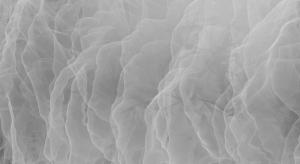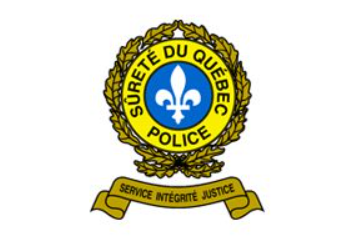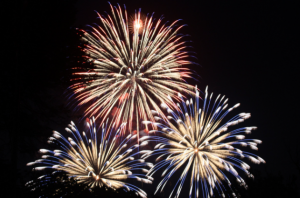Fire department and public safety
The mission of the Fire Department of the City of Percé is to ensure fire safety and civil security, by protecting people and property, through its prevention, preparation, intervention and recovery activities. It serves some 427 km 2 of its territory by means of three barracks scattered around the city to ensure maximum efficiency.
For emergencies, dial 911 anytime!
Smoke alarm
A smoke alarm, or smoke detector, alerts the occupants of a house with an audible signal when there is smoke. It allows you to react quickly and save lives. In the event of a fire, you have less than 3 minutes to evacuate your house. All smoke alarms must meet Canadian standards and have the Underwriters Laboratory of Canada “ULC” logo.
In which rooms should they be installed?
It is recommended to have 1 horn:
- on each floor, including the basement;
- in the corridor near the bedrooms;
- in each bedroom where one sleeps with the door closed;
- near the stairs.
Where should they be fixed?

Smoke alarms must be installed:
-
-
-
-
- On the ceiling, at a minimum of 10 centimeters (4 inches) from the wall, OR
- On the wall, at a distance of 10 to 30 centimeters (4 to 12 inches) from the ceiling, or from a corner;
- At a distance of 1 meter (40 inches) of a fan, air conditioner, air intake or return. The movement of air caused by these devices can repel smoke and interfere with the operation of the alarm;
- Unobstructed so smoke can get to the alarm.
-
-
-
Carbon monoxide (CO) is a colorless, odorless, non-irritating gas. Yet it is a poisonous gas which can be fatal. Several devices can give off CO and cause light, severe or fatal poisoning. This gas can come from:
-
- your heating systems, such as your furnace, fireplace or heater
- your gas or propane appliances (stove, BBQ , refrigerator , lamps, etc.)
- your automobile and your devices with combustion engine (mower, snowblower, generator).
 Even though normal use of these devices is not dangerous, carbon monoxide poisoning can occur if the devices malfunction or if they are used in a poorly ventilated area.
Even though normal use of these devices is not dangerous, carbon monoxide poisoning can occur if the devices malfunction or if they are used in a poorly ventilated area.
A CO (carbon monoxide) detector can react quickly , prevent carbon monoxide poisoning and save lives. The CO detector rlooks like a smoke detector. It works the same way, on a battery or plugged into the power grid, and can be purchased inexpensively at a hardware store. This safety device is designed to emit an alarm signal when it detects the presence of this harmful gas in a concentration threatening to health. To know where and how to install your CO alarm, you should refer to the manufacturer’s instructions. All carbon monoxide alarms must meet Canadian standards and have the Underwriters Laboratory of Canada “ULC” logo.
Warning! A conventional smoke alarm does not detect the presence of carbon monoxide.
You need to know what to do when a carbon monoxide alarm goes off.
If you plan to use a combustion appliance (eg a gas heater or a wood fireplace). Regularly check that it is working properly.
Radon can enter buildings, especially through foundations. It can sometimes accumulate and reach concentrations which can pose a risk to health. Since it is a gas that has no smell, taste or color, it is impossible to detect by the senses.
Identify sources of radon in a building
Radon concentrations are generally very low outdoors. Radon is quickly diluted in ambient air and therefore does not cause health problems.
However, radon can infiltrate the indoor air of buildings through various openings:
- dirt floors;
- cracks in the concrete slab or foundation walls;
- sumps;
- crawl spaces;
- joints;
- openings around drain pipes and service entrances, for example pipe fittings;
- the taps, especially the one in the shower. The taps can indeed provide an entry route for radon from radon-rich groundwater. They can thus help increase the concentration of radon in the indoor air of a house.
Radon accumulates mainly in the lowest and least ventilated rooms of a building, for example the basement. The concentration of radon in the indoor air of a home can depend on several factors:
- the concentration of uranium and radon in the soil;
- the climate;
- ventilation of the premises;
- waterproofing and insulation of the house;
- negative pressure, that is, the fact that the air pressure is lower inside the building than outside. This pressure difference has the effect of transforming the house into a sort of vacuum cleaner. Radon can then seep through cracks and other entry points that are in contact with the ground.
The only way to know if there is radon in a home is to measure it.
Measure the radon concentration in a residence
 To find out the radon concentration in your home, you need to measure it using a measuring device called a dosimeter. It is advisable to take this measurement for a period of at least 3 months and to carry out the radon measurement during the winter. You can measure the radon level in your home yourself or hire a professional.
To find out the radon concentration in your home, you need to measure it using a measuring device called a dosimeter. It is advisable to take this measurement for a period of at least 3 months and to carry out the radon measurement during the winter. You can measure the radon level in your home yourself or hire a professional.
Do not rely on test results from a house next door to yours or other homes in your neighborhood. This is because the radon concentration can vary a lot between homes, even if they are close to each other.
To measure the radon level in your home yourself, you must obtain a dosimeter and use it according to the manufacturer’s instructions. You will have to pay about $ 45 to buy a dosimeter and to have the results analyzed by a laboratory.
To get a dosimeter, you can:
- order it on the website of the Association pulmonaire du Québec , which offers dosimeters certified and approved by Health Canada;
- consult the site of, which provides information on obtaining a dosimeter;
- obtain a radon in the air test kit at certain hardware stores.
To obtain a list of professionals certified in radon measurement in Quebec , you can use the search tool of the National Radon Competence Program in Canada (PNCR-C). This certification program is recognized by Health Canada and the Quebec Ministry of Health and Social Services.
SOURCE: https://www.quebec.ca/habitation-et-logement/milieu-de-vie-sain/radon-domiciliaire
 SOPFEU’s mission is to optimize the protection of forests against fires in order to ensure the sustainability of the forest environment, at the best possible cost. Given the importance of natural resources and their economic impact, SOPFEU plays a leading role for the benefit of the entire community.
SOPFEU’s mission is to optimize the protection of forests against fires in order to ensure the sustainability of the forest environment, at the best possible cost. Given the importance of natural resources and their economic impact, SOPFEU plays a leading role for the benefit of the entire community.
Regularly check the flammability index in your area . Act with caution and help reduce the number of fires.
Sûreté du Québec
The police service on the territory of the City of Percé is provided by the Sûreté du Québec.

Rocher-Percé MRC substation
323, boul. Pabos, 2nd floor
Pabos (Quebec) G0C 2H0
Phone. 418 689-1305 | Telec. 418 689-1330
Emergency: 911 | 310-4141
Police security & statements of offense
By virtue of its service agreement with the MRC, the Sûreté du Québec sees to the application of municipal regulations resulting from its mission of maintaining peace, order and public security. It also sees to the application of the Highway Safety Code and the Act respecting off-highway vehicles on the territory of the MRC.
The MRC, for its part, sees to the collection of statements of offense relating to municipal regulations and those issued on municipal roads.
These statements of offense are payable within thirty days of the offense. You can send your payment by mail (money order or check) or go to the Rocher-Percé MRC offices at 129 boul. René-Lévesque Ouest, Bureau 101, Chandler (Québec) G0C 1K0, for payment in cash or by debit card or to make a payment agreement.
* Please note that statements of offense (tickets) are also payable by Accès D using as supplier: MRC Rocher-Percé.
In addition, if you wish to report to the Sûreté du Québec, a recurring offense or a concern in your sector which, on the other hand, does not constitute an EMERGENCY? You can do this by completing a form, directly on the Sûreté du Québec website and then simply click on “Send”. Your request will be directed to the mailbox of the position that was previously selected. Subsequently, an agent will contact you to validate the reported facts.
To access this form, click on this link for the French form and on this link for the English form.
You can also print and complete the hard copy and then drop it off at the post office or send it by email to

Civil security
Civil security is the set of actions and means put in place at all levels of society in order to know the risks, to prevent disasters, to limit their harmful consequences on the population, property and the environment. and promote the return to normal life.
In Quebec, civil security is based on the sharing of responsibilities between citizens, businesses, municipalities and the government of Quebec.
Consult the Urgence Québec website : your government information in an emergency
Have you been affected by a flood?
You may be eligible for financial assistance or compensation.
What to do before, during and after?
https://www.quebec.ca/securite-situations-urgence/urgences-sinistres-risques-naturels/inondation/
Civil security emergency services are available all year round, 24 hours a day, 7 days a week.
To report a civil security emergency
- a natural disaster, for example a flood, a landslide or an earthquake;
- another event that could compromise the safety of people or critical infrastructure, such as an explosion or a spill of hazardous materials.
Government Operations Center (COG)
By email
By telephone
- Toll free: 1 866 776-8345
By fax
- Toll free: 1 866 269-2324
Make a list of emergency numbers, unplug your appliances, inspect your electrical installations. See below for other steps you can take before , during , and after an outage to properly handle the situation. Above all, be careful.
To report a failure:
24 hours a day)
When to report a breakdown?
If you don’t see your fault on the map
Hydro-Quebec application
![]()

Station 61 | Barachois
1026 route 132 East, Barachois

Station 62 | Perforated
65 route 132 West, Percé

Station 63 | Cape of Hope
989 rang 2, Cap d’Espoir




 LUC LEBREUX
LUC LEBREUX